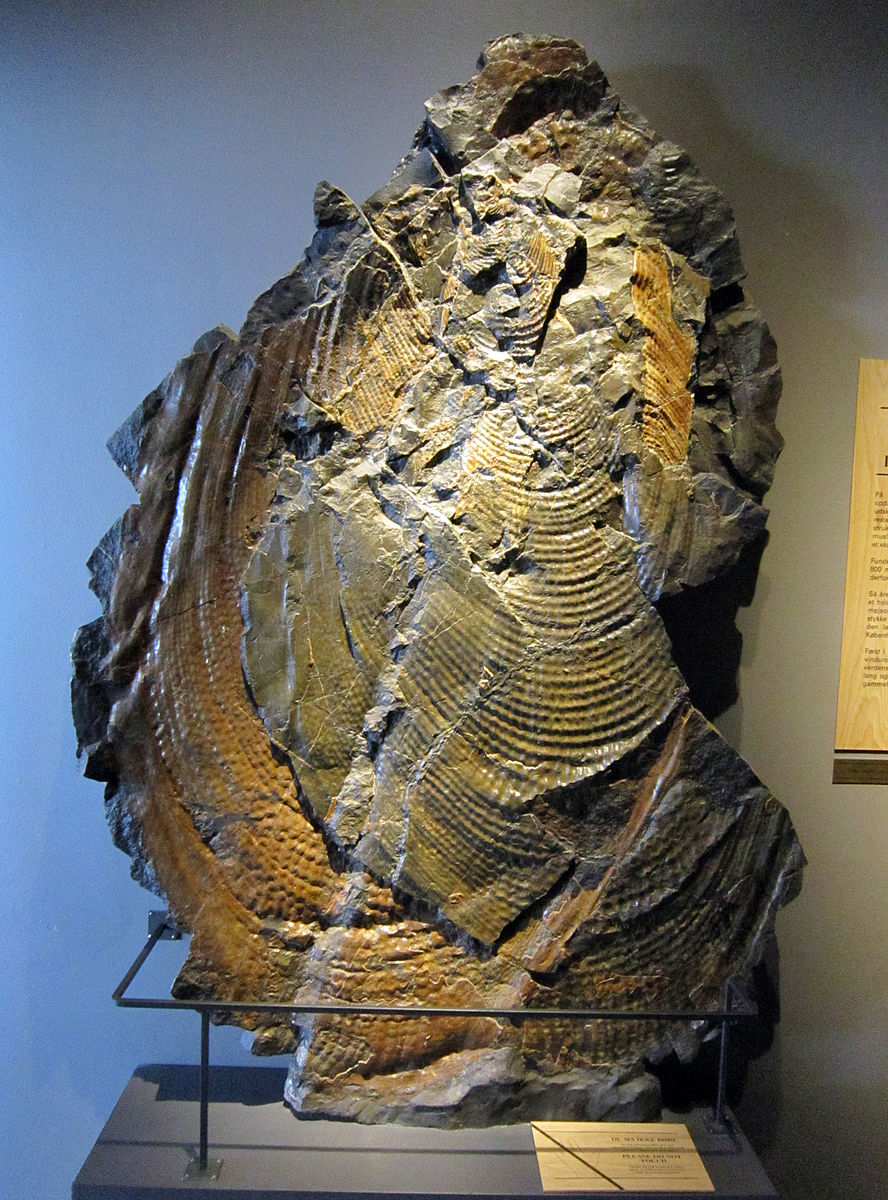Description
On Earth, this type of symbiosis is known as commensalism. Our team’s findings demonstrate the complicated analyses, the Clam structure could survive on Mars. Clam’s on Mars compare favorably with Earth species with similar structures. Geology on Mars often mimics biological processes, just like here on Earth. This new microbially induced Clam structure identified in Curiosity rover mission near the Gale Crater — SOL 66 — is a another perfect candidate for life on Mars.
Here we present our findings of a life form on Mars. The life form which was encountered by the Mars Curiosity Rover, that has been adequately collecting samples and data on Mars since August 6, 2012.
Martian microbes
“Curious chains of magnetic crystals have turned up in a meteorite from Mars. Why didn’t the single-file crystals collapse long ago into a magnetized clump? Scientists say ancient Martian microbes may have kept them in line” (NASA Ames press release).
The case for ancient life on Mars looks better than ever after scientists announced last week that they had discovered magnetic crystals inside a Martian meteorite — crystals that, here on Earth, are produced only by microscopic life forms. “Through Lithopanspermia the Clam structure on Mars could be the first class and phylum of clams ever to be seeded on Earth” (NASA, Patrick L. Barry).
Our Mars Life HD team suggests it’s possible the Clam structure and Organism stem ,through “panspermia”. The study suggests the Clam structure may have been a part of the Platyceramus group. Furthermore, we hope that this study helps the Clam Structure and Organism earn its own branch on the evolutionary tree.
How do we know this?
The Clam structure and symbiotic life form were found halfway out in a field within the Mars Gale Crater “near the northwestern part of the Aeolis quadrangle at 5.4°S 137.8°E” (Wikipedia). The Mars Life HD team located this primitive life form alive in the feeding grounds. This may be the first life form ever on Mars that features a symbiotic relationship that would hinder even Charles Darwin.
This filter feeder Clam structure, which may live more than five hundred years. The study suggests the Clam structure has two shells of equal size. As a result, it may be connected by two huge adductor mussels.
Therefore, with the aid of its symbiotic Organism and relationship. As a result, the Mars Life HD study suggests the Clam structure and Organism may filter out carbon dioxide in the air.
Let’s get the skepticism out of the way. Clams, as we know them today, need water, right? Of course! Recall, that NASA confirmed evidence of water in Geologic history and that liquid water flows on today’s Mars.
How do we know the observed object is a Clam structure?
Part of that answer is to examine both modern Earth clams and also, perhaps most significantly the clam fossil record. Let’s get started.
“Deep in the ocean, a clam processes its environment akin to a plant, although not identically. “The difference here is that while plants get their energy and carbon via photosynthesis by chloroplast symbionts, this clam gets its energy via chemosynthesis…”, said Jonathan Eisen, a professor at the UC Davis Genome Center and an author.
“Keeping in mind, “chemosynthesis derives from reactions in which substances such as hydrogen sulfide or ammonia are oxidized. This may occur with or without the presence of oxygen” (Jonathan Eisen, P.H.D.).
And, “Chemosynthesis derives from reactions in which substances such as hydrogen sulfide or ammonia are oxidized. This may occur with or without the presence of oxygen” (Dr. Mark Lever).
Even if there weren’t any oxygen on Mars, a Clam structure and Organism species could have evolved over billions of years.
Commensalism
We assert commensalism is present within the Clam structure. Symbiosis types may vary among mutualism, commensalism, and parasitism. On Mars, explorations have discovered that symbiosis exhibits many blends of all the basic assertions, especially between mutualism and parasitism. Observations since 2006, of life on Mars is that of mainly parasitism and mutualism. Although, we have repeatedly observed commensalism on Mars as well. Therefore, the study suggests symbiotic relationships are not always mutualistic or parasitic.
Curiosity’s Rover commonly discovered life forms on its incredible journey. The findings with which we are most concerned is the Giant Clam and its symbiotic life form, in which we, not coincidentally, ruled out parasitism where “one benefits and the other is harmed.” The Clam structure and Organism on Mars suggests that it’s alive. Yes, alive, and it could only be halfway through its life cycle if it lives as long as Clams have here on Earth.
Headline: “New record: World’s oldest animal is 507 years old.”
“The mollusc’s 507-year-long life came to an abrupt end in 2006 when … British researchers – unaware of the animal’s impressive age – froze the mollusk onboard the ship.”
“We won’t know the exact age of it. On the outside, the molluscs shell is curved, and that makes it difficult to get the right angle for measuring and counting the growth rings. The growth rings are also better protected inside the hinge ligament site. We cannot detect any visible vertical folds in its shell; this is the main characteristic that separates it from the similar shell of T. derasa” (Paul Butler).
“Empty shell . . . at the Aquarium Finisterrae in Spain. . . The largest known T. gigas specimen measured 137 centimeters (4 ft 6 in). It was discovered around 1817 on the northwestern coast of Sumatra.
“The weight of the two shells was 230 kilograms (510 lb). This suggests that the live weight of the animal would have been roughly 250 kilograms (550 lb). Today these shells are on display in a museum in Northern Ireland” (Wikipedia).
“Another unusually large giant clam was found in 1956 off the Japanese island of Ishigaki. However, it was not examined scientifically before 1984. The shell’s length was 115 centimeters (3 ft 9 in), and the weight of the shells and soft parts was 333 kilograms (734 lb). Scientists estimated the live weight to be around 340 kilograms (750 lb)” (Wikipedia).
Bivalves
It is said , Bivalves appeared in the fossil record first in the early Cambrian Era more than 500 million years ago. The total number of living species is about 9,200.
Biosphere on Earth
“Complex Creatures Thrive Deep Underground” have been recently discovered on Earth. “Over the last several years, researchers have discovered that the Earth’s biosphere extends deeper underground than had ever been thought. In fractures in the rock, many kilometers underground, microbial life has been found to flourish, making a living by taking chemical energy from rocks and even oil” ( CBC News Story).
Meteors from Mars
Because the Martian South Pole has been fortuitously tilted towards Earth for each beautiful Martian springtime thaw over billions of years, Earth’s biology has benefited.
As a result, rocks that carry seeds of life came from Mars? Yes, they did. These seeded all of Earths species to date. “The theory holds that ALH84001 was blasted off from the surface of Mars by a meteor impact about 17 million years ago and fell on Earth roughly 13,000 years ago.”
No, not that rock individually, any old rock or rocks from Mars’s past will do the trick. Now, for the first time in history, Earth’s and Mar’s building blocks are the same.
“Mars has seasons like those of Earth, but they average almost twice as long. Because the Martian south pole is tilted toward Earth from now through the rest of 2018, the south polar cap will be excellently presented to us.
In June, the typical winter cloak of clouds over the polar region should dissipate, leaving the south cap shining brilliantly and undergoing dramatic changes during its rapid springtime thaw” (Joe Rao, Space.com Skywatching Columnist).
Super life in Organisms on Earth
Dr. Penelope Boston also recently discovered Life underground. “The Cave of Crystals in Naica, Mexico are the site of a bizarre discovery. Scientists have identified ancient microbes trapped in the crystals that they estimate could be 50,000 years old.”
“These cave crystals contain 50,000-year-old life” (Alexander Van Driessche).
“It’s super life…” said Dr. Boston, who presented the discovery . . . at the American Association for the Advancement of Science conference in Boston.”
“If confirmed, the find is yet another example of how microbes can survive in extremely punishing conditions on Earth.” “The life forms — 40 different strains of microbes and even some viruses — are so weird that their nearest relatives are still 10 percent different genetically. That makes their closest relative still pretty far away, about as far away as humans are from mushrooms”, Boston said. Life, as in alive? The definition of life is controversial.
The current definition is that organisms are open systems maintain homeostasis. Therefore, are composed of cells, have a life cycle, undergo metabolism. Indeed, can grow, adapt to their environment, respond to stimuli, reproduce and evolve, per Dr. Penelope Boston.
What it means to be Alive
When Science uses the term “Alive”, it often leads to much confusion of facts. To a non-specialist, the term “organic compound” connotes life and living, yet the discoverer might merely be referring to a carbon-based molecule. The confusion most often arises in evolutionary contexts, where evolution enthusiasts speak of the spontaneous origin of life from non-living “organic” chemicals. Seldom does the evolutionary scientist explain that his use of “organic” implies non-living” (JOHN D. MORRIS, PH.D.).
NASA finds building blocks of Life
An MSN News headline read, “NASA Curiosity rover finds building blocks of life on Mars”.
In this headline, one by Doyle Rice, USA Today, proclaims, “NASA Mars rover discovers ‘building blocks’ for life: 3-billion-year-old organic matter”.
“For the first time, scientists say they have clear evidence that the chemical building blocks of life exist on Mars” (Joe Palca, Correspondent, Science Desk).
Penn State Dr. Kate Freeman looked at analyzer results once more, and had this to say, “There were signals there that were telling us that we had detected certain types of organic molecules . . . Organic molecules contain carbon, the chemical element central to life”.
The mission
Describing a Mars mission activity, Dr. Thomas Zurbuchen, named Head of NASA Science Mission Directorate, said, “. . . we only had to drill 5 centimeters deep and found the building blocks of life in 3 billion-year-old organic matter on Mars!”
It’s because the building blocks of life have been there to adapt, create and evolve that nature had the ingredients to proceed. Billions of years of adaptation, transmutation and a much larger feeding area, may explain the size of the Clam structure and its symbiotic life form.
Earth’s “…algae provide giant clams with a supplementary source of nutrition. These plants consist of unicellular algae, whose metabolic products add to the clam’s filter food.”
“As a result, they can grow as large as one meter in length even in nutrient-poor coral-reef waters . . . Tridacna gigas, is a clam that is the largest living bivalve mollusk. It is one of the most endangered clam species . . .They can weigh more than 200 kilograms (440 lb.), measure as much as 120 cm (47 in) across and have an average lifespan in the wild of over 100 years” (Wikipedia excerpts).
Structure
The Mars Life team found the Clam structure on Mars potentially serves to explain a missing link between the ancient mollusk order, which resemble clams, have smoother shells, and modern clams which also lack a symbiotic life form inside of their own.
According to the article entitled, Heat-Resistant Zooxanthellae Prevent Coral Bleaching, Rachel A. Levin, reports, “A team of Australian researchers suspected that the specific species of symbiotic zooxanthellae might have some sort of trait that prevents bleaching.
Different coral have slightly different species of zooxanthellae and these differences had never been studied in depth.
The researchers found that the species present in bleach-resistant coral was tolerant of heat. Compared to the more common species, they did well at high temperatures.
The algae had several stress resistance genes that seemed to allow them to cope with temperature changes. Not only did they adapt better overall but they also produced less of the poisonous byproducts, explaining why coral may not expel zooxanthellae of this species.”
Oxygen on Mars
“Since oxygen is a requirement for aerobic metabolism, at high temperatures it becomes a challenge for clams to obtain sufficient quantities. . . Temperature plays a vital role in biology by determining the rate of biochemical reactions; as temperature increases, biochemical reactions become faster. Metabolism is the biochemical breakdown of food to energy and is temperature dependent.” Wikipedia.
Water
“Like all other invertebrates, clams are cold-blooded organisms (poikilothermic); their body temperature fluctuates with that of the environment, and water temperature directly influences their metabolism.”
“Increasing water temperature increases metabolic rate, while decreasing temperatures will decrease metabolic rate, affecting both growth and reproduction of clams. At the upper and lower extremes of temperature tolerance, these biochemical processes will cease, resulting in diminished growth, poor health, or death” (Weber, Kerry L).
Life
Mars is teeming with life. As a result, we discovered the Clam structure and Organism near the subsurface soil water.
Clams can achieve a long life if the conditions are right. “One of the world’s largest clam fossils on Earth can reach (187 cm – 7 foot 1 inches). A Sphenoceramus steenstrupi specimen or a Tridacna gigas specimens from Mars can be twice as large as Earth’s ancient bivalves.
The largest and best-known species is P. platinus. Individuals of this species typically reached 1 m (3 ft 3 in) or more in axial length, but fossil specimens 3 m (nearly 10 feet) long have been found, making largest known mollusc” (Wikipedia).
Dr. Roth
Incredulous to us on Earth, Dr. Mark Roth had this to report. “Well, I have to tell you; something very odd, and that is that being exposed to low oxygen does not always kill.
So, in this room, there’s 20 percent oxygen or so, and if we reduce the oxygen concentration, we will all be dead. And, in fact, the animals we were working within the lab — these little garden worms, nematodes — they were also dead when we exposed them to low oxygen.
And here’s the thing that should freak you out. And that is that, when we lower the oxygen concentration further by 100 times, to 10 parts per million, they were not dead, they were in suspended animation, and we could bring them back to life without any harm. And this precise oxygen concentration, ten parts per million, that caused suspended animation is conserved.”Dr. Mark Roth.
Organisms
“We can see it in a variety of different organisms. One of the creatures we see it in is a fish. And we can turn its heartbeat on and off by going in and out of suspended animation like you would a light switch.
So, this was pretty shocking to me, that we could do this. And so, I was wondering, when we were trying to reproduce the work with the skier, that we noticed that, of course, she had no oxygen consumption, and so maybe she was in a similar state of suspended animation.
But, of course, she was also extremely cold. So, we wondered what would happen if we took our suspended animals and exposed them to the cold.” Dr. Mark Roth.
Worms not dead
And so, what we found out was that, if you take animals that are animated like you and me, and you make them cold — that is, these were the garden worms — now they’re dead. But if you have them in suspended animation, and move them into the cold, they’re all alive. And there’s the very important thing there: If you want to survive the cold, you ought to be suspended. Right? It’s a really good thing.”(Dr. Mark Roth).
Plant Life Area Spotted on Mars
Another, much older, headline, this time, from New York Times, September 19, 1955 ! “Plant Life Area Spotted on Mars. . . Blue-Green and Blotchy Nearly the Size of Texas Changes Geography of the Planet. . . Washington, Sept, 18 the discovery a blue-green area, almost the size of Texas, on the red face of Mars was announced today by the National Geographic Society. The area is believed to be vegetation.”
Thoth canal
“The society described the new markings as unexpected. It was estimated to cover 200,000 square miles near the great Thoth Canal. Never since the planet was first mapped 125 years ago have astronomers noted such a splotch except as an expansion of an existing dark area, the society said.”
“The discovery was reported by Dr. E. C Slipher, who led the 1954 The National Geographic-Lowell Observatory expedition to photograph the planet from South Africa.”
“The party took 20,000 photographs as part of a worldwide study, which is being scrutinized by an international committee. Mars spun closer to the Earth this summer than any time since 1941.” ( New York Times).
72 to 85 degrees along the Equator
Dr. E. C. Slipher, a senior astronomer and member of the observatory staff for 50 years. He was considered to be one of the worlds foremost authorities with the planet Mars.
He stated as far back as 1954 that the temperature on Mars sometimes reaches a balmy 85 degrees. This was determined July 2, 1954, while he participated in a Lowell Mars Expedition. Dr. Slipher’s announcement aired to the entire world, December 4, 1957.
On Mars, in the summertime, along the equator, temperatures range from a positive 72 to 85 degrees along the Elysium Planitia. The latitudinal boundaries extend for well over 1,200 miles towards the North and South Poles.
These warm temperatures and longer seasons have supported life on Mars for billions of years just like Earth.
Sol 66
“Elysium Planitia, located in the Elysium and Aeolis quadrangles, is a broad plain that straddles the equator of Mars, centered at 3.0°N 154.7°E.[1] It lies to the south of the volcanic province of Elysium, the second largest volcanic region on the planet, after Tharsis. Elysium contains the major volcanoes Elysium Mons, Albor Tholus and Hecates Tholus. Another more ancient shield volcano, Apollinaris Mons, is situated just to the south of eastern Elysium Planitia. . . Elysium was a part of the underworld reserved for the virtuous” (Wikipedia).
The Clam structure and Organism
The Clam structure and Organism was discovered in SOL 66 on Mars. The Clam Structure and Organism which may weigh as much as 0.5- 2.5 lbs. We hope that this study helps the Clam fulfill a yawning gap in the evolutionary saga of nearly 9,200 species of the Earth’s mollusc’s. It’s Organism or life form extends just beyond the outer lip of the Clam structure, which may aid in filter feeding on Mars.
Given that panspermia describes a natural law in which evolutionary progress and movement occurs toward the Sun, instead of the opposite direction. Our study suggests it serves as a theoretical framework in which the ancient Clam structure on Mars could be the progenitor of the species on Earth. Unlike, where subtle and not so subtle natural habitat characteristics in prehistoric times influenced a unique evolution to the diverse species we see today.
References
1. ^ Clam ^ Giant clam.
2. ^ Gale Crater Wikipedia
3. ^ Life Life Deep in the Ocean
4. ^A Clam that acts like a plant
5. ^Symbiotic life form
6. ^List if symbiotic relationships Wikipedia
7. ^Chemosynthesis
8. ^Nasa founded July 29, 1958
9. ^Thus, the evolution lie lives on. Does Organic Mean Living? BY JOHN D. MORRIS, PH.D. * | THURSDAY, FEBRUARY 01, 2007
9. ^Dr. Penelope Boston NASA Astrobiology Institute Understanding Life on Earth and Beyond
10. ^Complex Creatures Thrive Deep Underground
11. ^These cave crystals contain 50,000-year-old life
12. ^New record: World’s oldest animal is 507 years old
13. ^It’s time to rewrite the record books. New accurate dating shows that the world’s oldest animal was 507 years old when it died.
14. ^Dr. Thomas Zurbuchen
15. ^Heat-Resistant Zooxanthellae Prevent Coral Bleaching
16. ^ Zooxanthellae
17. ^The Role of Water Temperature in Hard Clam Aquaculture1
18. ^ Dr. Mark Roth
19. ^ Elysium Planitia Dr. Douglas A. O’Handley
20. ^ Dr. E.C Slipher A member of the observatory staff. “Plant Life Area Spotted on Mars.” Published: September 19, 1955 Copyright © The New York Times New York Times. Archives
21. ^ Mars and Beyond which aired on December 4, 1957.
22. ^ Platyceramus
23. ^Panspermia Radiopanspermia
24. ^ NASA Confirms Evidence That Liquid Water Flows on Today’s Mars
25. ^More Evidence Life Could Have Come From Beyond
26. ^Martian Micro-Magnets
27. ^Curious chains of magnetic crystals have turned up in a meteorite from Mars. Why didn’t the single-file crystals collapse long ago into a magnetized clump? Scientists say ancient Martian microbes may have kept them in line.
28. ^Mars Makes Its Closest Approach in 15 Years This Summer: How to See It
29. ^Allan Hills 84001
30. ^NASA Ames press release







Reviews
There are no reviews yet.